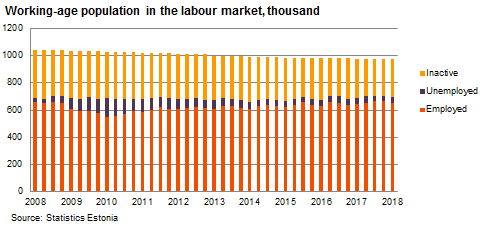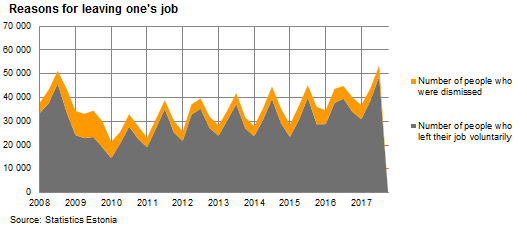 Higher economic activity lifted employment.
Higher economic activity lifted employment.- The number of the inactive declined substantially and the unemployment rate grew due to a labour market reform.
According to Statistics Estonia, employment increased by 0.6% despite a strong base effect last year. Employment rose among entrepreneurs, the number of wage-earners decreased, over the year. Employment grew in the secondary sector (industry, energy, and construction) in South and Southeast Estonia. At the same time, the data of the Estonian Tax and Customs Board show that the number of wage-earners increased by 1.7% in the first quarter, over the year.
The number of the inactive declined substantially (-4.2%, yoy), mostly among students and pensioners. The unemployment rate rose to 6.8%. The number of the unemployed grew mostly due to the work ability reform (that motivates people with a disability to look for a job). Around a third of the registered unemployed were people with decreased working ability in April this year.
The working-age population grew slightly during 2017, breaking a downward trend of the past two decades. It is too early to tell whether this is a one-off change or a new long-term trend. Between 2000 and 2017, the working-age population (people aged 15-74) declined by almost 100,000 persons (which is the population of the second biggest city in Estonia, Tartu). Immigration exceeded emigration for the third year in a row in 2017. Close to half of the immigrants were Estonian citizens, followed by the citizens of Russia, Ukraine, Finland, and Latvia.

A shortage of labour was the most important factor restricting business for 22% of manufacturing, 27% of service companies and for 40% of construction companies in April. The rate of job vacancies, i.e., the share of job vacancies in the total number of jobs, increased to 1.9% in the fourth quarter. Employees feel more and more secure in the labour market. The number of employees who have left their jobs on their own initiative has been growing in recent years. Therefore, wage pressures will persist. Tax data show that gross wage growth remained strong in the first quarter.

First quarter’s data is in line with our forecast. We expect employment to increase slightly this year as demand for labour grows. At the same time, the supply of labour is limited, so the number of job vacancies should grow. The unemployment rate is expected to increase due to the labour market reform.













